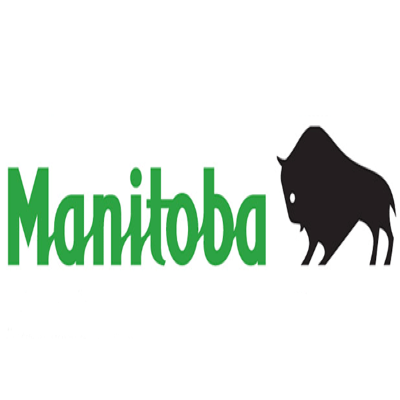FRI
Type of resources
Topics
Keywords
Contact for the resource
Provided by
Formats
Representation types
Update frequencies
status
-

This data layer contains individual forest stand level information, including: * working group (meaning a grouping of stands with the same predominant species composition. They are generally labelled based on the tree species that occupies the greatest canopy closure or amount of basal area in the stand) * species ID and percentage * height * age * stocking (meaning a qualitative measurement of the density of tree cover in a forest stand, generally based on the species with the most basal area, expressed as a percentage value ranging from zero to a maximum of 4. A stocking of 0 is empty, 1 is fully stocked, more than 1 is overstocked) * crown closure * soil moisture * stand modifier (meaning the subdivision of productive forest areas based on the presence or absence of physical or biological factors that will limit the ability to practice timber management) * site index * stand area (m²) This dataset was created as a more current update to the previous 1978 Forest Resource Inventory to support forest management within the Eastern Ontario Model Forest planning area.
-

This data layer contains individual forest stand level information for the Kemptville District, including: * working group (meaning a grouping of stands with the same predominant species composition. These are generally labelled based on the tree species that occupies the greatest canopy closure or amount of basal area in the stand) * species ID and percentage * height * age * stocking (meaning a qualitative measurement of the density of tree cover in a forest stand. This is generally based on the species with the most basal area, expressed as a percentage value ranging from zero to a maximum of 4. A stocking of 0 is empty, 1 is fully stocked, more than 1 is overstocked) * crown closure * soil moisture * stand modifier (meaning the subdivision of productive forest areas based on the presence or absence of physical or biological factors that will limit the ability to practice timber management) * site index * stand area (m²) This data was digitized in 1998 from 1978 hardcopy mylars through the Ice Storm Recovery Funding Program.
-

Web map of Manitoba's forest inventory in 2021. This web map is used within Manitoba's Five Year Report on the Status of Forestry, 2016 - 2021 story map. Web map of Manitoba's forest inventory in 2021. This web map is used within Manitoba's Five Year Report on the Status of Forestry, 2016 - 2021 story map. The web map includes all of the Forest Resource Inventory (FRI) and Forest Land Inventory (FLI) interpreted data that forms Manitoba's 'green zone'. For Manitoba's northern portion where FRI/FLI data does not exist (white zone), North American Land Change Monitoring System (NALCMS) data from 2015 was updated and used.
-

This dataset represents Manitoba's digital forest inventory for the 1970s. Please note that because of data capture techniques used for this inventory, its base features (e.g., water, roads) may not align with other datasets (e.g., Google Maps, Esri Basemaps). │ This dataset represents Manitoba's digital forest inventory for the 1970s. Please note that due to the data entry techniques used for this inventory, basic characteristics (e.g., water, roads) may not match other data sets (e.g., Google Maps, Esri Basemaps). This dataset represents Manitoba's digital forest inventory for the 1970s. It was created from forest inventories captured by photo-interpretation during different time periods in the 1970s. It consists of original inventory polygons without any subsequent modifications, such as disturbances or silvicultural activities. Please note that, because of data capture techniques used for this inventory, its base features (e.g., water, roads) may not align with other datasets (e.g., Google Maps, Esri Basemaps) .This dataset covers a large portion of the middle of Manitoba, and is almost exclusively within the Boreal Plains and Boreal Shield ecozones. Forest inventories created in the 1970s used the Forest Resource Inventory (FRI) standards to capture details about the land base relevant to forestry, along with non-forest base features. Data collected in the FRI standard included, among other things, tree species composition, tree species composition, site class (site growing conditions), cutting class (stand maturity, and a proxy for age), crown closure and productivity. This dataset also includes estimated age and year of photography attributes.This feature class is also available for download from DataMB. Metadata: Manitoba Forest Inventory —1970s | This dataset represents Manitoba's digital forest inventory for the 1970s. It was created from forest inventories captured by photo-interpretation at various periods in the 1970s. These are the original inventory polygons, without any subsequent changes, such as disturbances or silvicultural activities. Please note that due to the data entry techniques used for this inventory, the basic characteristics (e.g., water, roads) may not match other data sets (e.g., Google Maps, Esri Basemaps) .This dataset covers a large portion of central Manitoba and is located almost exclusively in the Boreal Plains and Boreal Shield ecozones. Forest inventories created in the 1970s used Forest Resources Inventory (IRF) standards to capture land base details relevant to forestry, as well as characteristics of the non-forest land base. Data collected under the IRF standard included, among other things, tree species composition, site class (site growth conditions), stand operational class (stand maturity and age approximation), canopy closure, and productivity, among others. This data set also includes attributes such as the estimated age and year of the photo.This feature class can also be downloaded from MB Data.Metadata: Manitoba Forest Inventory — 1970s **This third party metadata element was translated using an automated translation tool (Amazon Translate).**
-

This dataset represents Manitoba's digital forest inventory for the 1960s. Please note that because of data capture techniques used for this inventory, its base features (e.g., water, roads) may not align with other datasets (e.g., Google Maps, Esri Basemaps) This dataset represents Manitoba's digital forest inventory for the 1960s. It was created from forest inventories captured by photo-interpretation during different time periods in the 1960s. It consists of original inventory polygons without any subsequent modifications, such as disturbance or silvicultural activities. Please note that, because of data capture techniques used for this inventory, its base features (e.g., water, roads) may not align with other datasets (e.g., Google Maps, Esri Basemaps).This dataset covers a large portion of the middle of Manitoba, and is almost exclusively within the Boreal Plains and Boreal Shield ecozones. Forest inventories created in the 1960s used the Forest Resource Inventory (FRI) standards to capture details about the land base relevant to forestry, along with non-forest base features. Data collected in the FRI standard included, among other things, tree species composition, site class (site growing conditions), cutting class (stand maturity, and a proxy for age), crown closure and productivity. This dataset also includes estimated age and year of photography attributes.This feature class is also available for download from DataMB .Metadata: Manitoba Forest Inventory –1960s
-

The Forest Resources Inventory (FRI) provides information about tree species, including: * composition * height * age * density Ontario’s forest resource inventories allow us to support resource management and land use decisions, and help sustain healthy, natural environments. Forest resource inventories for each forest management unit are legally required under the [Crown Forest Sustainability Act (1994)](https://www.ontario.ca/laws/statute/94c25). Every 10 years, the ministry creates a new forest management plan where inventory data is updated and must be compliant with the requirements detailed in the Act. Ontario’s FRI is also used to meet provincial, federal, and international reporting requirements. These draft FRI Packaged Product data sets are being provided for the purpose of consultation and product development. The number of attributes and the algorithms used to generate the attribute as well as the data formats will change over time and should not be considered the final version. A final version of the structure and content of the FRI will be made available after the required consultations are complete. Data sets will be made available for each Forest Management Unit as they are produced. For more information on the FRI please see: [https://www.ontario.ca/page/forest-resources-inventory](https://www.ontario.ca/page/forest-resources-inventory)
 Arctic SDI catalogue
Arctic SDI catalogue